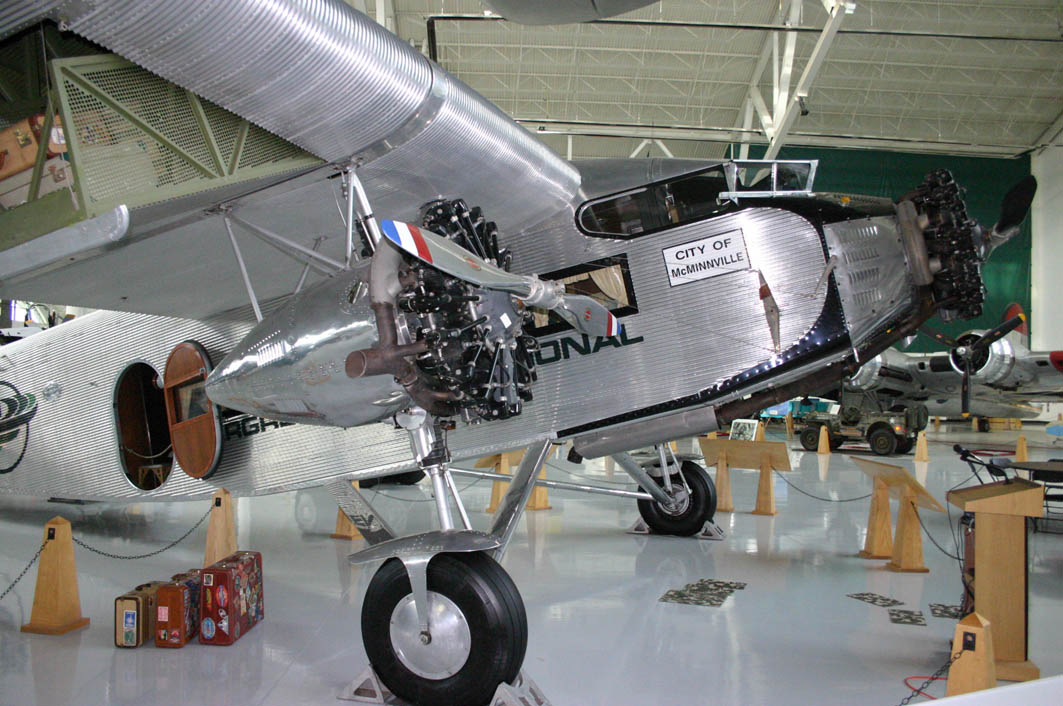
Ford Tri-Motor
 |
| Tri-Motor N9645 is preserved at the Evergreen Aviation Museum in McMinnville, Oregon |
| The
Ford Tri-Motor earned its place as a truly classic airliner after its
robust design enabled it to carve out a 40-year career during a period
when many of its early rivals were obsolete after just five years. The type originated when the Ford Motor Company bought Stout Metal in 1925. Stout then designed a three-engined version of his 2-AT, known as the 3-AT. But Stout was then dismissed from the company and the type was totally redesigned, emerging as the 4-AT and making its first flight on June 11, 1926. At the time it was the largest passenger aircraft produced in the United States and was powered by three 200hp Wright Whirlwind J4 radials. The initial 4-AT-A, of which 14 were built, carried two crew in an open cockpit and eight passengers in a cabin. Ford Motor Air Service put it into service in August 1926. The 4-AT-B emerged a year later with 22- Whirlwind J5s, space for 12 passengers and increased dimensions. Thrty-five of this model were built, with one 4-AT-C being constructed with a 400hp Pratt and Whitney Wasp engine in the nose. Three 4-AT-Ds were then built, all of them with different powerplant arrnagements, followed by one similar 4-AT-F. The 5-AT soon followed with room for 13 passengers and powered by three 420hp Pratt and Whitney Wasps. Only three 5-AT-As were built in 1928 but a year later the 5-AT-B emerged with seating for 15 and three 420hp Wasp C-1 or SC-1s and 42 of these were constructed. The 5-AT-C could carry 15 passengers and 24 of these were built. Several other variants were produced but the only one built in other than single examples was the 6-AT, with four produced. Total production of all varients was 78 4-AT, 117 5-AT and ten miscellaneous. The type became known as the Tin Lizzie or Tin Goose due to its tough construction. Development ended in 1932 but the type is still in use in 2006 with Scenic Airlines in Las Vegas, which uses it on sightseeing trips. Several other examples are flown by collectors. The Bushmaster was a scaled up Tri-Motor designed by Henry Ford but not built during his lifetime. Two aircraft were built in the 1980s, although one was writtren off in 2004. |
| Contents | Photos and census | Update |